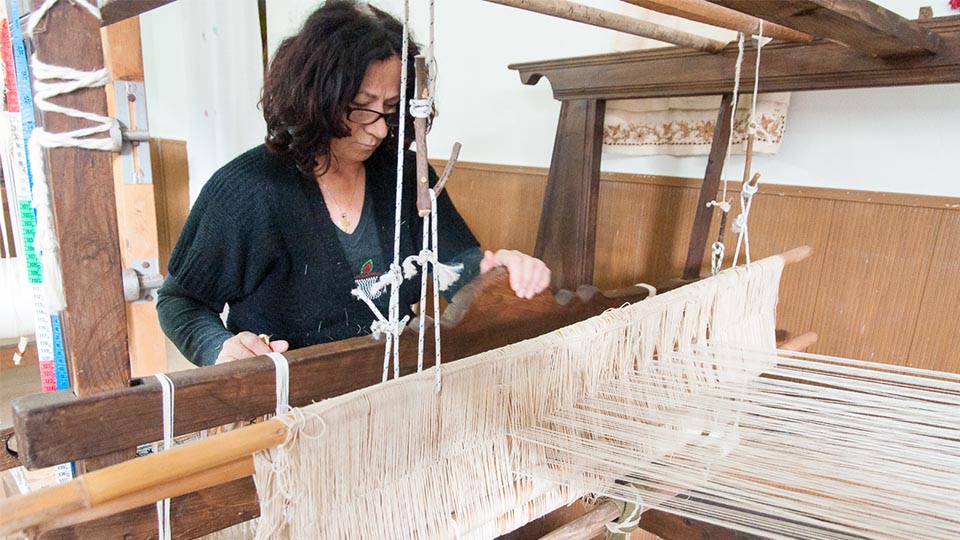Crete, the largest of the Greek islands, is not only known for its stunning landscapes and ancient history but also for its vibrant artisanal traditions. Among these, the island’s weaving heritage stands out as a testament to the creativity and skill of Cretan artisans. For centuries, Cretan weavers have produced intricate textiles that reflect the island’s cultural richness and artistic prowess. This guide explores the world of artisanal textiles in Crete, highlighting the traditional techniques, unique patterns, and the enduring appeal of Cretan woven fabrics.
A Historical Tapestry
The art of weaving in Crete dates back to the Minoan civilization, around 2000 BC. Archaeological findings, including frescoes and artifacts, reveal that the Minoans were adept at creating complex textiles using natural fibers. Over the centuries, weaving techniques evolved, influenced by various cultures such as the Romans, Byzantines, Venetians, and Ottomans. Each period left its mark on the island’s textile tradition, contributing to the rich tapestry that defines Cretan weaving today.
Traditional Techniques
Cretan weaving is characterized by its use of traditional techniques, passed down through generations. These techniques ensure the creation of high-quality, durable textiles that are as beautiful as they are functional.
Loom Weaving
The primary method of textile production in Crete is loom weaving. The island’s weavers use both horizontal and vertical looms, depending on the type of fabric and the desired pattern. Horizontal looms are typically used for creating large pieces like rugs and bedspreads, while vertical looms are preferred for smaller items such as scarves and table runners. The weaving process involves interlacing warp and weft threads, often using natural fibers like wool, cotton, and silk.
Embroidery
In addition to weaving, embroidery plays a significant role in Cretan textiles. Intricate designs are hand-stitched onto woven fabrics, adding a layer of decorative detail. Traditional Cretan embroidery often features motifs inspired by nature, such as flowers, animals, and geometric patterns. These motifs are not only decorative but also carry symbolic meanings, reflecting the island’s cultural heritage.
Unique Patterns and Motifs
Cretan textiles are renowned for their distinctive patterns and motifs, which set them apart from other regional weaving traditions. Common motifs include:
Nature-Inspired Designs: Floral and botanical patterns are prevalent in Cretan textiles, symbolizing the island’s lush landscapes and agricultural abundance. These designs are often rendered in vibrant colors, creating a striking visual impact.
Geometric Patterns: Geometric shapes, such as diamonds, zigzags, and spirals, are integral to Cretan weaving. These patterns, rooted in ancient symbolism, add a sense of rhythm and structure to the textiles.
Mythological Themes: Cretan weavers sometimes incorporate mythological themes into their designs, drawing inspiration from the island’s rich mythological heritage. These motifs often depict scenes from Greek mythology, adding a narrative element to the textiles.
The Revival of a Tradition
In recent years, there has been a resurgence of interest in traditional Cretan textiles, driven by a global appreciation for handmade, artisanal products. This revival has been supported by local artisans, cooperatives, and cultural organizations dedicated to preserving and promoting the island’s weaving heritage.
Artisanal Workshops
Several workshops across Crete are dedicated to the craft of weaving, offering visitors the opportunity to learn about traditional techniques and even try their hand at the loom. These workshops, often located in picturesque villages, provide an immersive experience that connects participants with the island’s cultural roots.
Cooperatives and Associations
Cooperatives and artisan associations play a crucial role in sustaining the weaving tradition. Organizations such as the Women’s Cooperative of Anogeia and the Weaving Cooperative of Kritsa support local weavers, provide training, and promote their work both locally and internationally. These cooperatives ensure that traditional techniques are preserved and that artisans receive fair compensation for their work.
Incorporating Cretan Textiles into Modern Life
Cretan textiles are not just historical artifacts; they are versatile and stylish additions to contemporary interiors and wardrobes. Here are a few ways to incorporate these artisanal creations into modern life:
Home Decor: Cretan woven fabrics make beautiful additions to home decor. Use handwoven rugs, bedspreads, and cushions to add a touch of artisanal elegance to your living spaces. The rich colors and intricate patterns can complement various interior design styles, from rustic to modern.
Fashion Accessories: Scarves, shawls, and bags made from Cretan textiles are fashionable and unique accessories. These items not only add a pop of color to your wardrobe but also carry a story of heritage and craftsmanship.
Gifts and Souvenirs: Artisanal textiles make thoughtful gifts and memorable souvenirs. Whether it’s a hand-embroidered table runner or a woven wall hanging, these pieces are cherished for their beauty and cultural significance.
Conclusion
The rich weaving heritage of Crete is a testament to the island’s enduring artistic traditions and cultural resilience. By exploring and supporting artisanal textiles, we not only appreciate the skill and creativity of Cretan weavers but also contribute to the preservation of a valuable cultural heritage. Whether you are a visitor or a resident, incorporating Cretan textiles into your life allows you to connect with the island’s history and bring a piece of its artistic legacy into your everyday world. Embrace the beauty and craftsmanship of Cretan textiles and discover the timeless appeal of this ancient art form.


